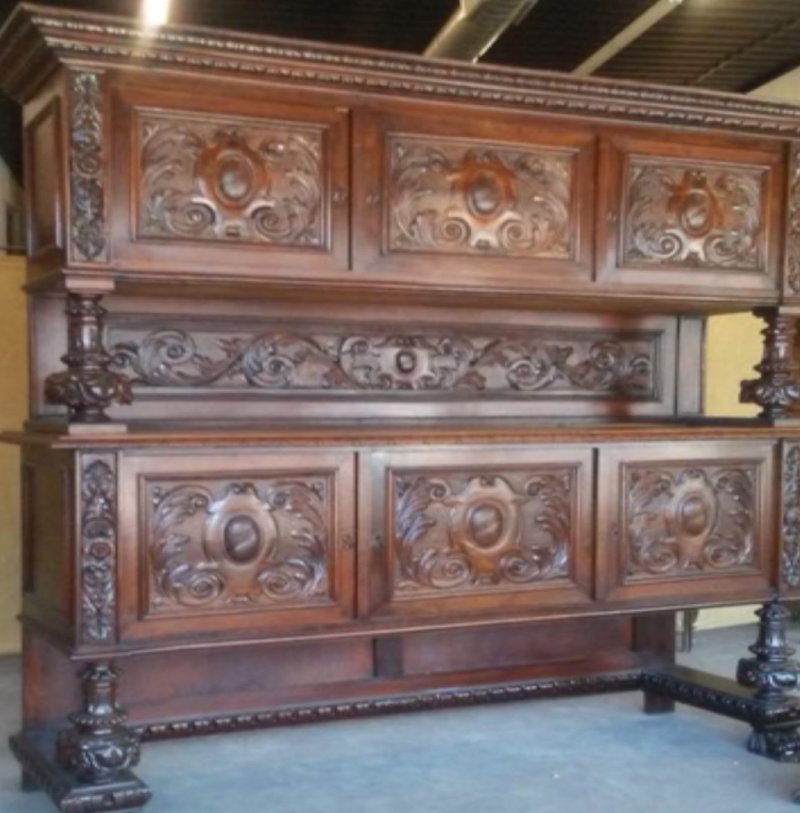DEAR HELAINE AND JOE: I have a two-tiered buffet that I am trying to find out about and determine its value. This was bought at an estate auction. It was not going for very much, so I snagged it. I have no details, but it is stunning and in amazing condition. It is 78 inches long, 80 inches tall and 33 inches deep. Any information would be appreciated.
Thank you,
D.D.
DEAR D.D.: It certainly is a stunning piece of furniture, and we love the beautiful detail work from the elaborate foliate "C" scroll flanking oval medallions to the heavy paw feet, which seem a bit out of place on such an otherwise refined piece.
Our original thought on this piece was Jacobean Revival, and that may very well be what it was called when it was new back in the first or second quarter of the 20th century. On further reflection, we feel the piece is more a 20th century Renaissance Revival piece because it does bear only a passing resemblance to the heavy and ponderous pieces with melon spacers usually associated with pseudo-Jacobean furniture.
We asked D.D. to send us photographs of the back of the piece and this tends to confirm our dating. In the photographs, the piece appears to be made from mahogany, but older examples would have been made from oak or walnut. That tends to confirm our thinking that the buffet is circa 1925. But what exactly should it be called?
We checked hundreds of similar pieces that have been sold in the past few years and have seen nomenclature such as "court cupboard" or "livery cupboard." But the piece is neither of these two things. It is a "buffet a deux corps," which originated in provincial France during the reign of Louis XIV (1638-1715) and consists of a molded cornice over two cupboards with drawers or a shelf between.
Usually, the cupboards have only two doors -- while the one in today's question has three -- and typically the legs on a buffet a deux corps are cabriole (S-curved). This one, however, has heavy paw feet, which reminds us of the feet sometimes found on Scottish cupboards and chests. This leads us to speculate that D.D.'s buffet was possibly made in Great Britain, perhaps for the Scottish market.
D.D. says she "snagged it" for very little and we understand that. This type of furniture is too ponderous to go well in most modern home decor. It is striking, but it is also the proverbial elephant in the room and would overwhelm most current furnishings and design plans.
These factors tend to keep the value down on the current marketplace and we have seen similar pieces sell for as little as $10 (yes, we agree that is a travesty). Because if the buyers were private individuals, they had no place in their homes for it, and if they were dealers, they knew it might very well remain in inventory for a very, very long time.
Still, this is a lovely piece and we feel it should have brought somewhere in the $400 to $500 range at auction and retail in the $750 to $1,000 range -- but only if the right customer can be found.
Helaine Fendelman and Joe Rosson have written a number of books on antiques. Do you have an item you'd like to know more about? Contact them at Joe Rosson, 2504 Seymour Ave., Knoxville, TN 37917, or email them at [email protected]. If you'd like your question to be considered for their column, please include a focused, high-resolution photo of the subject with your inquiry.
HomeStyle on 06/08/2019


